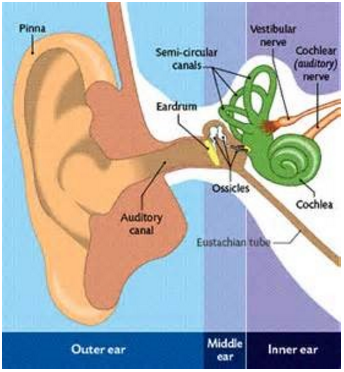
A conductive hearing loss occurs when sound cannot effectively travel through the outer and middle ear. When this happens, it impacts our cochlea’s (hearing organ) ability to send a clear signal to our brain. Below we describe some of the categories, effects and why’s of this disease.
Diseases of the middle ear are a category of conductive hearing losses and they include:
Conductive Hearing Loss: Otitis Media (Ear Infection)
Ear infections occur when fluid builds up in the middle ear cavity, an air-filled space behind our ear drum. The infection is most often bacterial or viral and common in children. Symptoms include ear pain, drainage, hearing loss and fever.
Conductive Hearing Loss: Cholesteatoma
A Cholesteatoma is an expanding skin growth that forms in the middle ear and often develops as a cyst or sac. As the skin cells accumulate, the growth can increase in size and begin to deteriorate the small bones in our middle ears. Cholesteatomas can be due to chronic ear infections and Eustachian tube dysfunction. Symptoms include hearing loss, ear pain, tinnitus, dizziness, headaches and ear discharge.

Conductive Hearing Loss Otosclerosis
Otosclerosis is an abnormal growth of bone in the middle ear which can hinder the middle ear system from working properly. The causes of Otosclerosis are still unclear. However, it can be related to previous measles infection and stress fractures. This disease can also be inherited. Symptoms include gradual hearing loss that first begins in the low pitches, dizziness, balance problems and/or tinnitus.
Conductive Hearing Loss Ossicular Discontinuity
Ossicular Discontinuity occurs when the bones in the middle ear do not fit together the way they should or are separated. This can occur from a blow to the head, trauma to the ear drum, cholesteatoma or congenital ear malformation. Symptoms include hearing loss.

